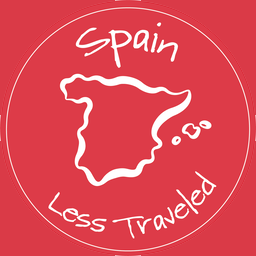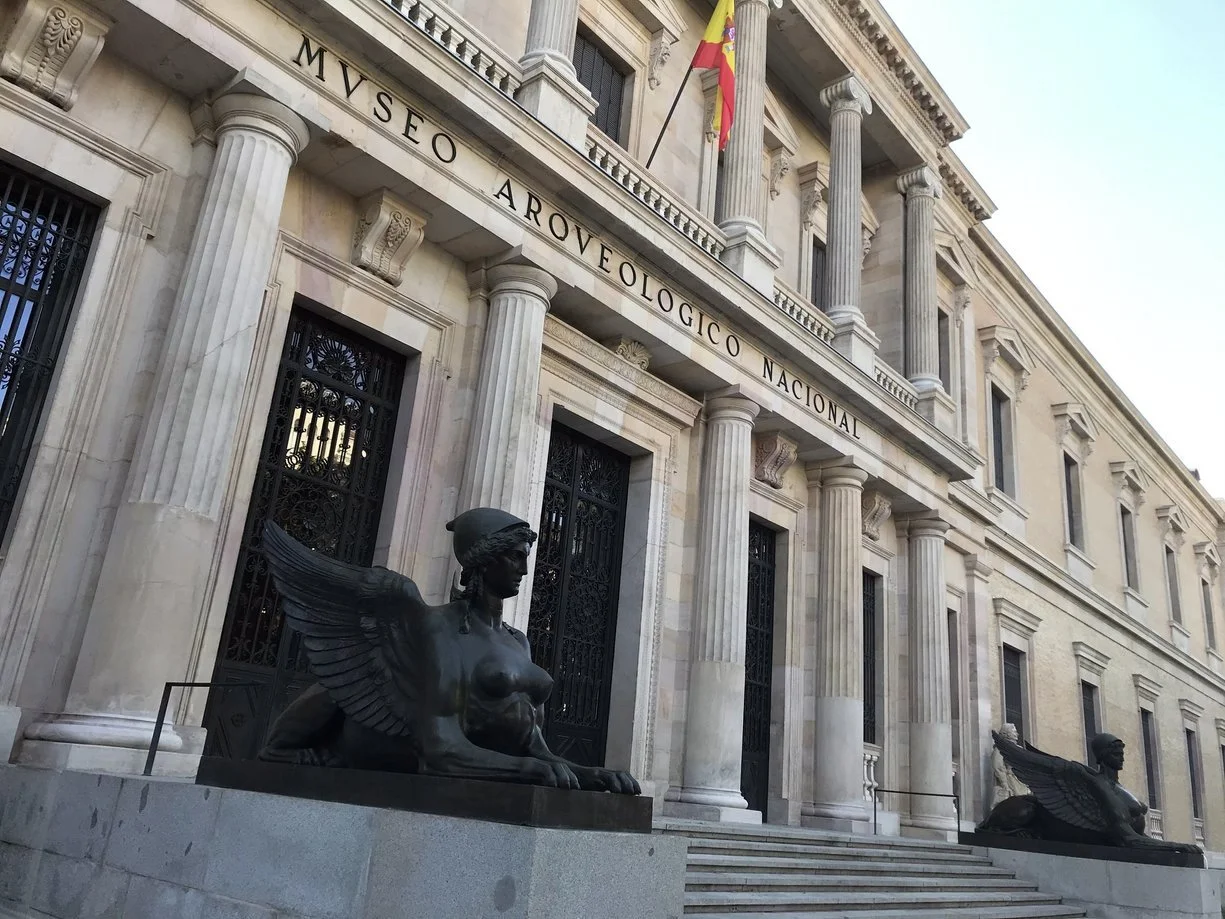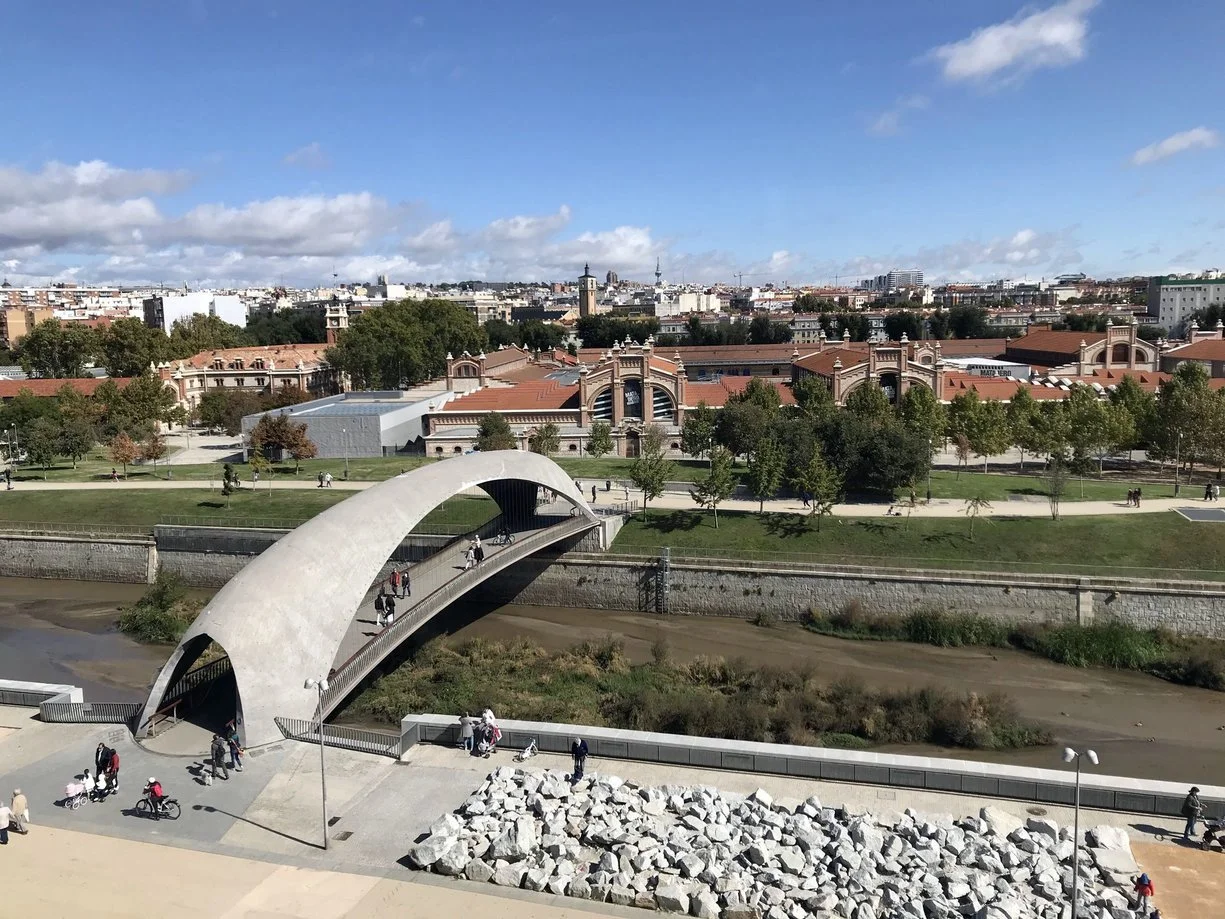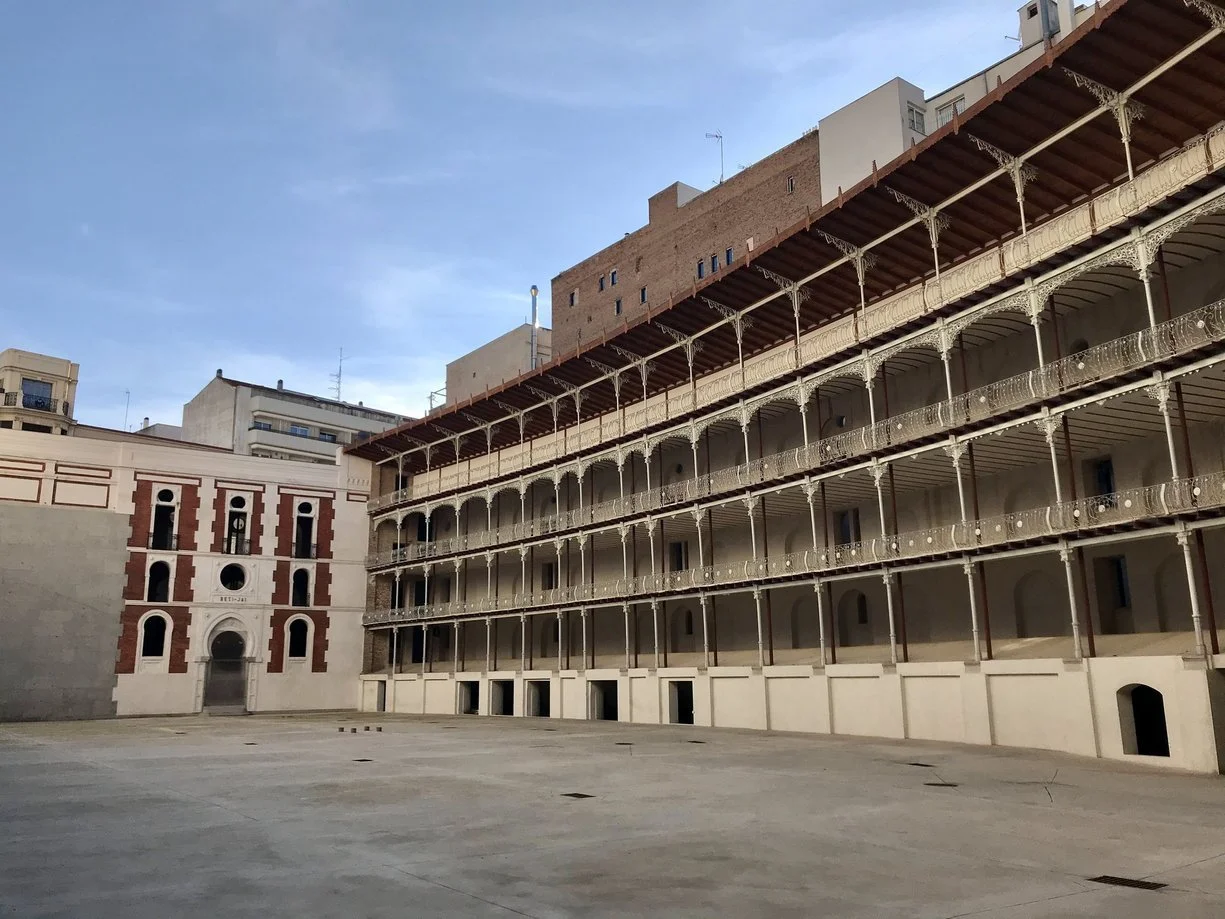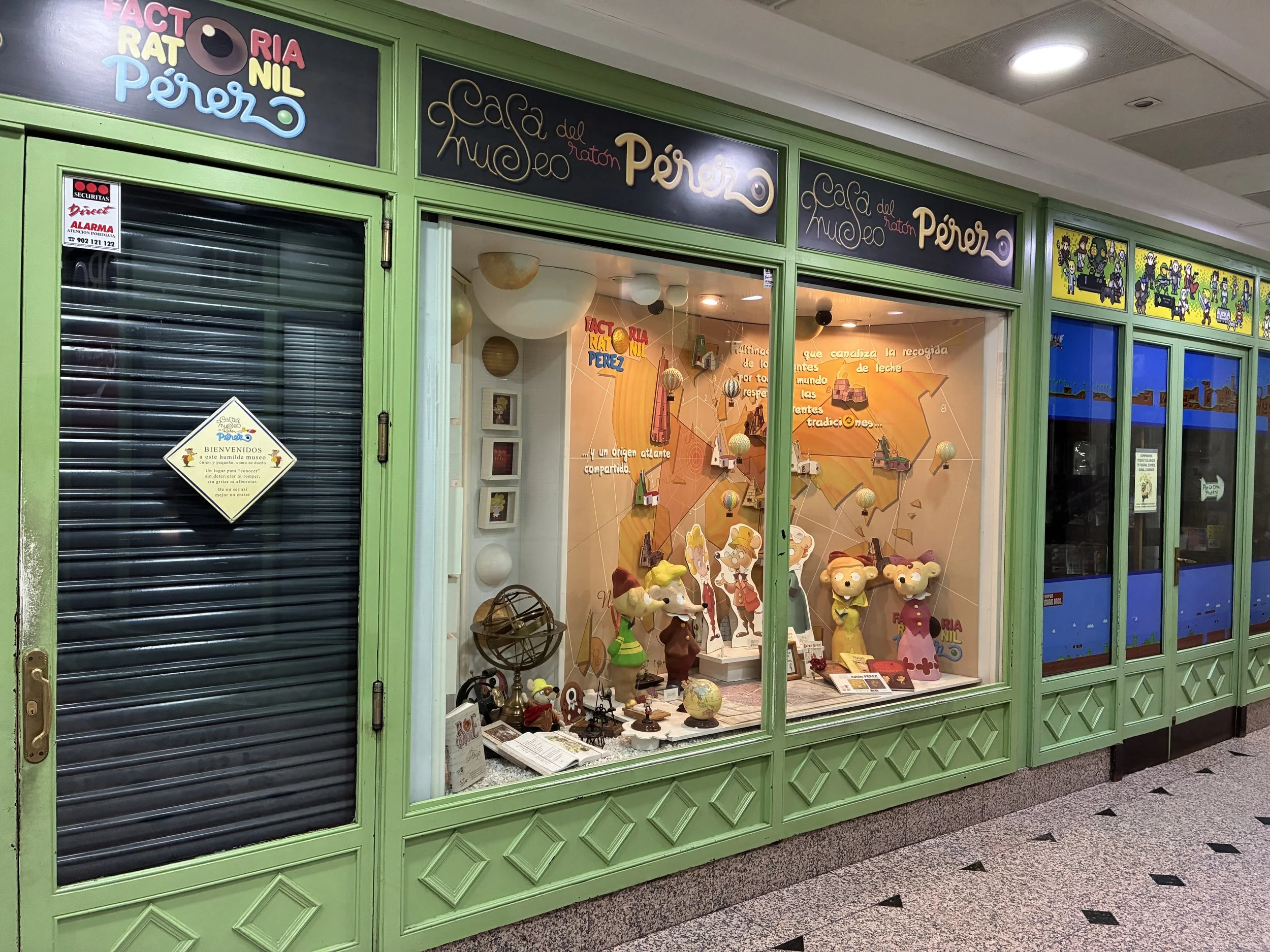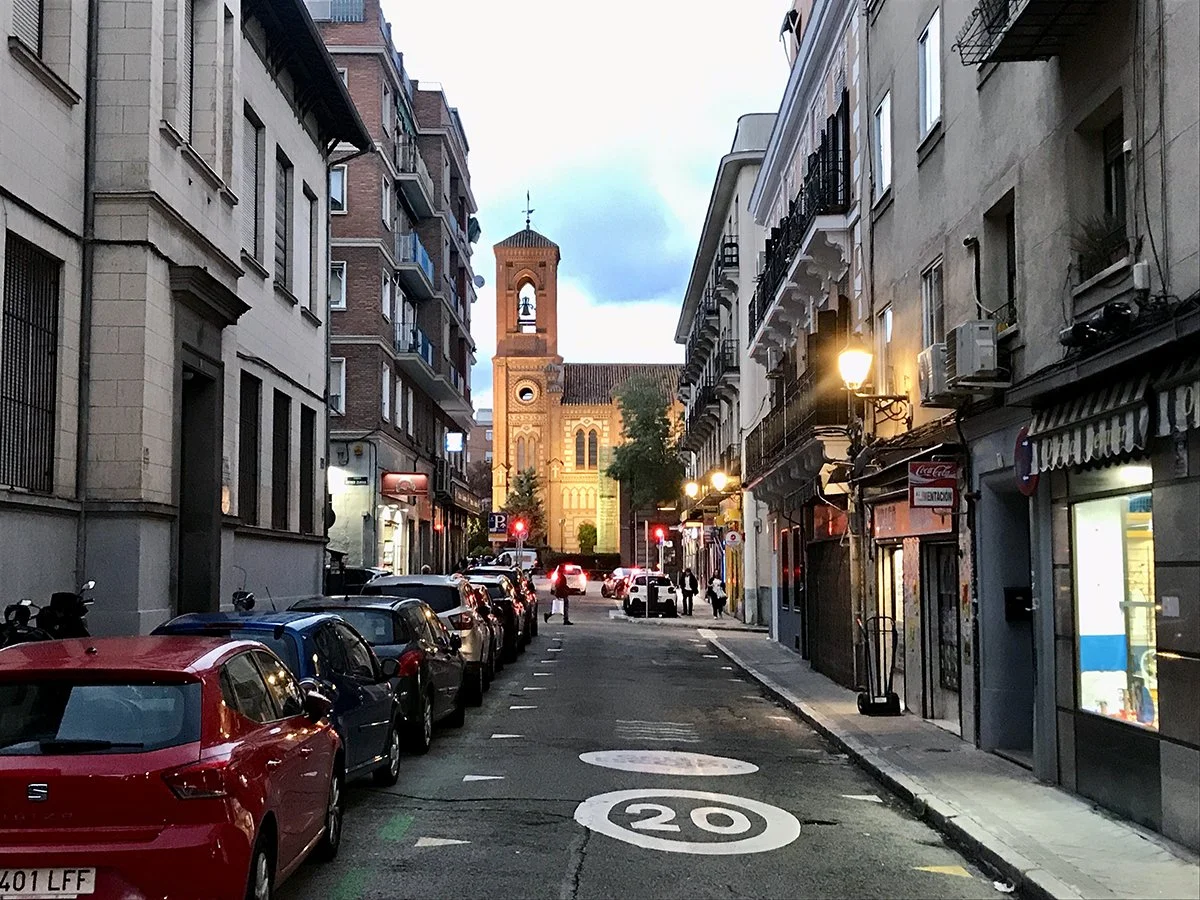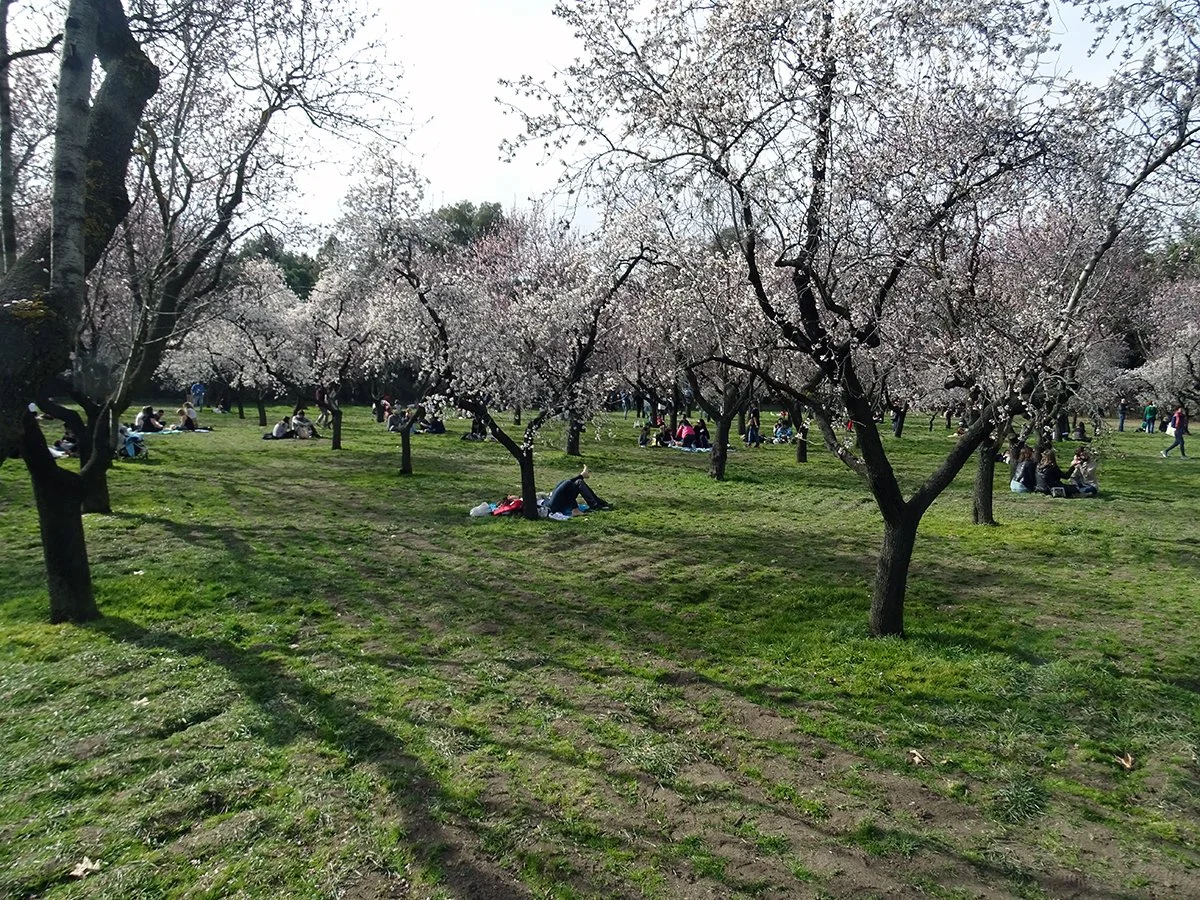Madrid off the beaten path
Our guide to how to discover and enjoy the city’s less known places.
Originally published 21 May 2025
All images are courtesy of the Spain Less Traveled team, unless otherwise stated.
Just walking around Madrid’s beautiful neighborhoods is one of the best joys of the city.
Madrid is not just the entry point for many travelers visiting Spain, especially those from the United States, Canada, Australia, and New Zealand — it’s also one of the main destinations. Its unique blend of history, art, food, and party scene makes it a must in your Spain travel itinerary. But most of these travelers don’t have enough time to go beyond the classics… yes, I’m looking at you Museo del Prado and Palacio Real. If you have more time in your Madrid visit, or simply want to avoid the crowds, you came to the right place.
Our favorite Madrid “off the beaten path” spots
Madrid is full of palaces, museums, gastronomical markets, parks and cool neighborhoods, and many visitors fill their itinerary with them. But there are “others” that also merit your attention, and here is our list of those “others”.
Palacio de Liria, and other beautiful Madrid palaces
The gardens and main façade of Palacio de Liria.
If you ask any Spaniard who holds the most important noble title in Spain, all will answer the Duke of Alba. The House of Alba has always been entangled in Spanish history. For instance, Fernando, the 3rd Duke, was a key figure during the reigns of Charles I and Phillip II. María Teresa, the 13th Duchess was a muse for Goya and appears in many of his paintings (never confirmed gossip says that she was the “Naked maja”) and the 18th Duchess, Cayetana, was one of the most popular characters in late 20th century and early 21st century Spain (she passed away in 2014).
The House of Alba has several palaces all over Spain that you can (and should) visit, such as Palacio de las Dueñas in Seville or Palacio de Monterrey in Salamanca. But the most important one is Palacio de Liria, in Madrid. Just for the art collection, the palace is a must visit. But also the beautiful architecture, the fine furniture and the amazing historical library (with handwritten letters by Columbus amongst others), help to make an unique visit.
Other smaller but impressive palaces that you can visit regularly in Madrid are
or Casa de América (Palacio de Linares).
Museo Arqueológico Nacional (Archaeological Museum)
Madrid is famous worldwide for its “Triangle of Art”, formed by three main museums: Museo del Prado, Museo Reina Sofía and Museo Thyssen. All three are amazing art museums that you should visit. But the city offers many others displaying different disciplines. Perhaps the most important is Museo Arqueológico Nacional. Located in a beautiful neo-classical building in Serrano street, and recently renovated, the museums displays an amazing collection of artifacts from all periods of Spanish history presented in a modern and dynamic way. Some of the highlights are Dama de Elche (an iberian female bust from the 5th century BC), the hall of Roman mosaics, the visigoth crown of Recceswinth (7th century A.D.) and the carved wood mudejar ceilings from the 16th century.
If you’re interested in architecture, read our post: The Incredible Architecture of Spain.
The historical convents, some still in use.
Real Monasterio de la Encarnación, very close to the Royal Palace
Monasteries and convents were very important in Spanish life until the 19th century, when they stopped having influence in politics and art. Madrid had many, but most of them disappeared creating public spaces (for instance, Plaza Tirso de Molina occupies the space of a former monastery). But three of the most important ones remain today, and you can visit them.
Monasterio de las Descalzas Reales, located steps ahead from Puerta del Sol, was a nunnery founded in the 16th century for widowed women of the Royal Family. Several widowed queens and infantas ended their lives there. The building is absolutely impressive, with gorgeous wall paintings and chapels, and a rich art collection (the room full of tapestries by Rubens is amazing), and most curious of all, there are still nuns living there, but not Royals. You can’t see them as this is a cloistered covent and you only visit the “historical” part.
Real Monasterio de la Encarnación was created in the 17th century to have a convent closer to the Royal Palace. It has a smaller historical importance, but it houses many treasures.
And starting in May 2025, Monasterio de las Comendadoras, in the Malasaña area, has been open to the public after a long and detailed restoration. You can visit the church, the cloister and some of the main halls.
Casa de Campo, Madrid’s largest park
Lago station, the main access to Casa de Campo, and the most unique metro station in Madrid.
With almost 4000 acres, Casa de Campo is the largest urban park in Madrid, and one of the most ignored by tourists. This huge park includes a lake surrounded by cafés and terraces, an amusement park, a convention center and endless trees.
It even has a zoo and aquarium! It’s located in the Western part of Madrid and the best way to access it is through metro, as the stations Batán and Lago are right inside the park. Actually, the line between both stations goes on the surface, so you can also appreciate the park from the train.
San Antonio de la Florida, Goya’s Paradise
In 1798, Goya was commanded to decorate the hermitage of San Antonio de la Florida. In just six months, the artist covered the dome and walls of the church with an allegory to the miracle of Saint Anthony. The frescoes are considered one of Goya’s masterpieces, and the painter himself is buried under the central dome.
The church is currently closed for renovation works that will last at least until 2026. Check their website for updates.
Very close to the church, you’ll find Casa Mingo, a Madrid institution, always crowded with locals wanting to enjoy its main specialities: roasted chicken and tortilla de patatas.
Matadero, and Madrid Río
Matadero, right by Madrid Río is a favorite spot for culture and leisure
In the 1920s Madrid’s beautiful neo-mudejar slaughterhouse was built. It operated until 1996, and afterwards it was converted into a cultural center. The project kept the original buildings pretty intact, with small interventions in an industrial brutalist style. It contains several exhibition spaces, two theaters (one specific for dance), a library, an immersive exhibitions space, a cinema and a restaurant. Check the Matadero programme here. It looks far away, so tourists usually skip it, but it’s only 5 metro stops from Sol. (Legazpi station).
And right behind Matadero you can enjoy Madrid’s largest urban intervention in recent years. All of Madrid is surrounded by a highway (M-30) that has become a barrier separating the center from other residential areas. In 2005 a big part of that highway was buried and a park was created on top of it also making the Manzanares river more accessible and enjoyable. The resulting park was named Madrid Río, and opened in 2011. It’s 6 km long and is a favorite spot for locals to stroll and do sports. You’ll find many children playgrounds and some modern walkways crossing the river.
Beti Jai, a different ball game
Basque ball was the most popular sport 120 years
Before football (or soccer) became the national sport, there was another popular sport: Basque ball. This sport, with many variations is a bit similar to squash. it can be played with the bare hand, a racket or an arched basket (the most known one). Madrid had many “frontones”, where the game was played, but only one survives: Frontón Beti Jai, built in the 1890s and in use for the game until 1919. It’s a gorgeous structure that has been recently restored and you can visit. Once or twice a year there are some matches played in the space.
There are plans to cover the courtyard so the facility can also be used for concerts, sports and other activities.
If you’re interested in concerts, check out our post: Showtime in Spain.
Andén Cero, Metro’s main museum
Travel back in time to the 1940’s in the old Chamberí metro station
Madrid’s metro is one of the largest in Europe and it works like an underground city. It has several museums, but the most impressive is Andén Cero, in the old Chamberí station. The station, belonging to Line 1, was closed in 1966, since it was too short for modern trains, and replaced by the Iglesia station and even if the trains still passed through it, it was left abandoned.
But in 2008 it was reopen as a museum, showing the original tiled design by architect Antonio Palacios, the original signage and directional panels, and beautiful advertising dating back to the 1920s. The ultimate travel through time. It can be visited only from Friday to Sunday, and it’s advisable to book tickets in advance.
The other markets
Mercado de Motores is a modern Madrid tradition.
Most tourists visiting Madrid rush to Mercado de San Miguel, close to Plaza Mayor, to taste tapas and drinks. Even if it’s a beautiful market, it’s too crowded to really be enjoyable.
But Madrid has many other markets attended mostly by locals that you can visit for a more genuine experience. Most combine regular food stalls with small restaurants and tapas bars. Some of our favorite are Mercado de San Fernando (in Lavapies), Mercado de Antón Martín (in Calle Atocha), Mercado de Mostenses (by Plaza de España and Gran Vía) and Mercado de Maravillas (in Cuatro Caminos).
There are also several temporary flea markets, like the famous Rastro (held every Sunday and Holiday) that you can visit. But there are several more: Mercado de Motores (held on the second weekend of every month at Museo del Ferrocarril in Delicias), or Mercado de las Ranas (held on the first and third Saturday of every month all around Barrio de Las Letras). These two are basically for vintage and design things. But they also have food trucks and live music for a total experience.
Casa del Ratón Pérez and other fun things for kids.
Entrance to the Ratón Pérez museum
El Ratón Pérez is the Spanish equivalent of the Tooth Fairy. When kids lose a tooth, they leave it under the pillow at night and in the morning they will find a treat. The character was created in the late 19th century for the then infant king Alfonso XIII, who had lost a tooth, and became extremely popular. There is a small museum dedicated to him right next to Puerta del Sol. It’s a bit hidden as it’s on the first floor of a commercial building, but kids love it. The official website for getting tickets is in Spanish only, but you can find more information in English in the Madrid’s official tourism page.
There are many other places that kids will love. Apart from the already mentioned Casa de Campo’s amusememt park and zoo, there are other theme parks in the city too. For instance, Faunia, a park dedicated to nature.
Parque Warner is a theme park dedicated to Warner Bros. and DC characters.
All big museums in Madrid, as well as many other sights, have specific visits or routes for kids, including scavenger hunts, storytellers and actors in costumes. Look for them when booking tickets online.
And of course kids will love visiting one of Madrid’s big football stadiums. Both Estadio Santiago Bernabeu, where Real Madrid plays, and Estadio Metropolitano, house of Atlético de Madrid, have great visits that include the field, the lockers room, the trophies room and many more areas.
If you happen to be visiting Madrid on January 5th, you can enjoy Cabalgata de Reyes, a parade dedicated to the Three Kings that is an institution in all Spanish cities, and Madrid, of course, holds the largest one.
Puerta del Angel and Latina district.
The beautiful church of Santa Cristina is a reference in the neighborhood.
The Latina district (not to be mistaken with La Latina) is one of the most trendy districts right now in Madrid. Located south of the Manzanares river, it’s a destination for many locals that want to escape the crowded (and touristy) center. The main activity point is Mercado Tirso de Molina (not to be mistaken with the square). This beautiful market was built in 1932 and has been revamped recently, without losing its charm. It’s full of small restaurants and it’s a preferred destination for vermouth time on weekends. Around the market, many restaurants and cafés have opened. The closest metro station is Puerta del Angel, but you can arrive by walking along Madrid Río too.
Carabanchel and Oporto, the new SOHO
The main square of Carabanchel brings small town charm into the city.
Carabanchel is the most populated district in Madrid. But it wasn’t always part of Madrid. Actually it was a village dating back to the 12th century. In the 18th and 19th century it was a leisure area for the rich, who built palaces and villas. It was integrated in Madrid in 1948 and has been a popular residential area since then. It keeps a small city vibe, with a cute plaza surrounded by the old city hall and the Church of San Sebastián. You can also visit Finca de Vista Alegre, one of those palaces that is being recovered right now. (You can visit the gardens and the palace’s exterior).
But Carabanchel and the nearby Oporto area have become new favorite areas for artists, with many studios and art galleries. The area around the Oporto and Urgel metro stations has plenty, especially in Calle Nicolás Morales and around Calle Virgen de Belén.
Usera, the new Chinatown
Chinese New Year parade in Usera.
Usera was a housing project built in the 1930’s with nice tree-covered streets and small houses. The project kept growing and going out of control with a lot of construction, until in 1954 it was integrated into Madrid.
Now it is one of the most diverse and thriving areas in Madrid. In the early 2000s hundreds of families from China settled in the area, converting it into Madrid’s Chinatown. You’ll find a lot of great Chinese restaurants, as well as supermarkets, electronic stores, etc. But also a large community of Bolivians have settled in the area, with its own cultural manifestations too. The main street of the area is Calle Nicolás Usera, but the best restaurants are along and around Calle Nicolás Sánchez.
Every year, Usera celebrates the Lunar New Year with a huge parade that is fun to watch but so crowded that getting there is a feat.
It’s also a great place to see street art in Madrid.
El Capricho, the duchess’ delight
The Greek pavillion in Parque del Capricho.
Parque del Capricho was the estate of the Duchess of Osuna, who in the late 19th century rivaled with the Duchess of Alba for being the center of Madrid’s aristocratic life. She built a beautiful palace, as well as small greek-style temples, a village house and orchard, and many other “caprichos” (whims).
During the Spanish Civil War a bunker was built underground for the “republican” command that can be visited on special occasions.
But you can freely visit the full park, that gets gorgeous in the spring (March, April, and May), and it’s an oasis during Madrid’s hot summers (June to September). The closest metro station is of course “El Capricho”.
Quinta de los Molinos, “hanami” in Madrid
“Madrileños” relax under the almond trees in bloom.
Quinta de los Molinos is another large park located in a residential area in Eastern Madrid. It becomes super popular in late February or early March (depending on the year), when its hundreds of almond trees go in full bloom. It’s an event that is becoming more and more popular among locals, so we recommend that you go during working hours on weekdays, to avoid the crowds. If you are lucky with the timing it can be a wonderful experience.
“Cuatro Torres”, the mighty four (or five) towers.
The most recognizable elements in Madrid’s skyline are the “cuatro torres”.
This area, located along Paseo de la Castellana and north of Plaza de Castilla, was where Real Madrid had its training grounds and other facilities. In the late 1990’s they moved to Valdebebas (close to the airport) and turned the area into a business district. The main feature are the four skyscrapers (the tallest in Spain) with heights ranging from 220 to 250 meters. They are mostly used for offices, but one has a hotel in the upper floors, with killer views of Madrid.
In the recent years a fifth lower tower was added, with a beautiful open air shopping mall on the ground floor. The mall, named Caleido, offers several shops, restaurants and cinemas, and it’s slowly becoming a leisure center for the north of Madrid. The closest metro station is “Begoña”.
Mirador del Cerro del Tío Pío, a beautiful sunset
Bring your “merienda” and enjoy the sunset at Cerro del Tío Pío.
The most popular spot in Madrid for sunset is the mirador between Palacio Real and Catedral de la Almudena. But it often gets crowded with tourists. For a classic Madrid sunset, head a bit out of the center and down to the Cerro del Tío Pío park in the Vallecas neighborhood (Metro Line 1: Buenos Aires stop). These seven small hills, also known as Las Tetas or Siete Tetas are grassy and offer some of the most beautiful Madrid sunsets. Bring a blanket and a small picnic and enjoy a Madrid evening like a true local.
A historical note: “Tío Pío” was an immigrant from Avila that created a slum in the 1920’s. It grew to have a population of over 10,000, that were relocated when the area became a park.
And also you can explore a bit of the Vallecas district, a former village incorporated to Madrid that is one of the most characteristic areas of the city.
Finally, a word about responsible tourism in Madrid
Madrid is one of the most visited cities in Spain. In 2024, 11 million people visited the city. This is great for the local economy, but it also disrupts the life of the city heavily. But you can reduce your impact by following some tips:
Learn a few words or phrases in Spanish and use them. Locals really appreciate the effort and you will get huge smiles in return.
Hire local tour guides and use tour companies based in Madrid. Don’t visit Madrid as part of a big group tour.
Avoid staying in Airbnbs in Madrid. The Airbnb debate is global, and the use of it is questionable worldwide. The city has a number of measures and regulations in place to soften their effect in the city. But it is still recommended to opt for hotels, aparthotels, and guesthouses instead.
Be mindful of how you treat the city. This is not your playground and things like getting out of control drunk on the streets are rude. This city is home to over three million people, who live and work, and are not on vacation.
Finally, keep a close eye on your things, especially your valuables. Pick pocketing and mobile phone theft can be problematic, especially in crowded spaces and in the more touristic areas of the city. Violent crime is rare, and Madrid is a safe city. But petty theft does happen.
Be sure to check out our commitment to encouraging responsible, sustainable, and ethical travel.
Ready to start your journey?
Looking for more help designing the Madrid (and beyond) Spain travel itinerary of your dreams? Need help putting all of this together?
We offer several levels of Spain traveling planning services. Spain Less Traveled can work with all different types of travelers and travel planners, from those who want our full support throughout the entire travel planning process to those who simply need to talk with a Spain destination specialist to assist with specific aspects of travel planning.
Or book a FREE 15 minute discovery call
to help you decide which of our professional Spain travel planning services suits you best.
